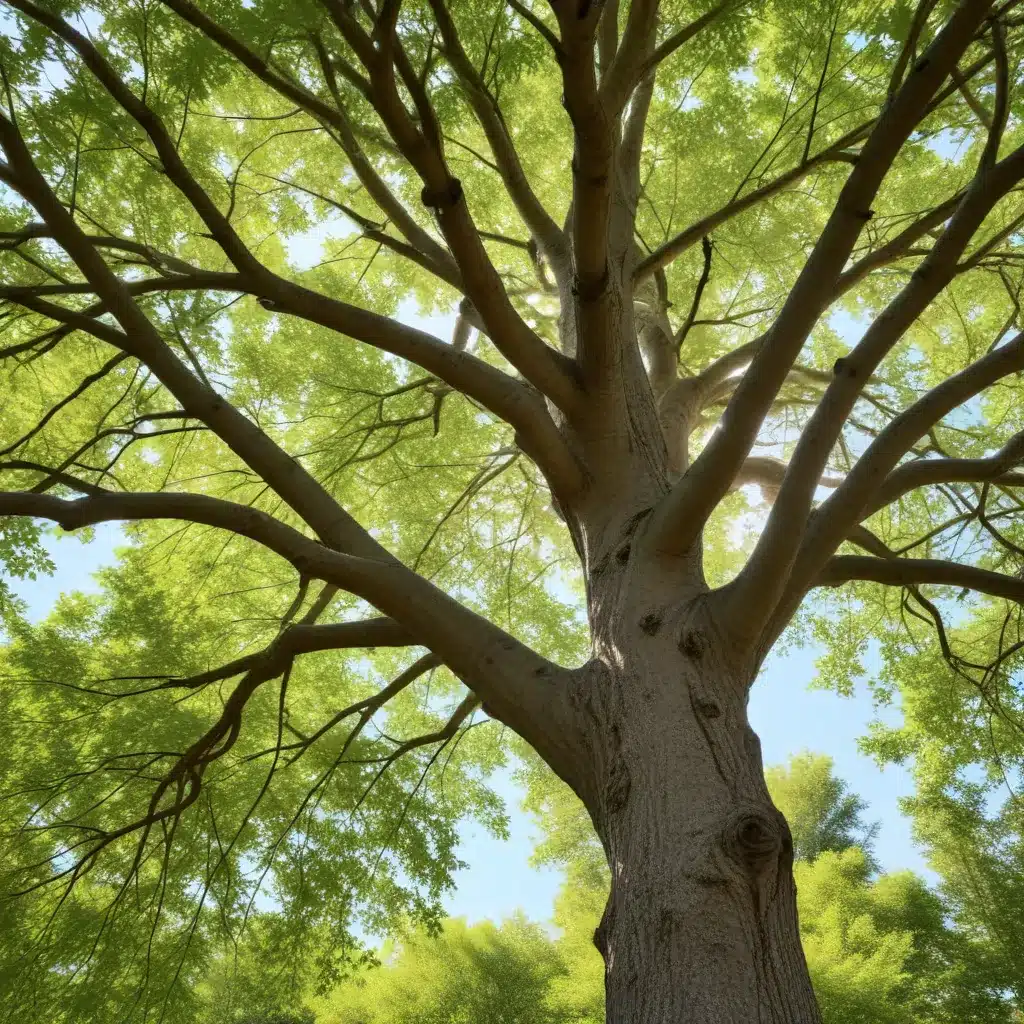
Tree Health and Wellness Dynamics
Seasonal Influences on Tree Physiology
Trees are complex, living organisms whose health and vitality are intricately tied to the rhythms of the natural world. As the seasons shift, trees undergo profound physiological changes that profoundly impact their well-being. During the spring, trees awaken from dormancy, directing energy into bud break, leaf expansion, and root growth. The summer months witness a frenzy of photosynthetic activity, shoot elongation, and secondary wood formation. As autumn approaches, trees begin to senesce, shedding leaves and transitioning into dormancy to conserve resources for the winter ahead. This cyclical ebb and flow of a tree’s life processes is governed by environmental cues such as day length, temperature, and precipitation.
Factors Affecting Tree Vitality
Beyond seasonal shifts, a myriad of other factors can impact a tree’s overall vigor and resilience. Soil quality, nutrient availability, and moisture levels play crucial roles in supporting optimal root health and nutrient uptake. Pests, diseases, and environmental stressors like drought, freeze damage, or mechanical injury can all compromise a tree’s structural integrity and physiological functions. Urban environments, in particular, present unique challenges, with air pollution, soil compaction, and infrastructure conflicts posing significant threats to tree health.
Holistic Approach to Tree Well-Being
To ensure the long-term vitality of trees, a comprehensive, holistic approach is essential. This involves understanding the interconnected nature of a tree’s biological, environmental, and cultural needs. By recognizing trees as dynamic, living systems, we can develop proactive care strategies that nurture their overall well-being, rather than merely reacting to individual problems.
Unlocking Nature’s Rhythms
Phenological Patterns in Trees
Phenology, the study of recurring natural phenomena and their relationship to climate, offers invaluable insights into the seasonal rhythms of trees. By observing the timing of bud break, flowering, leaf expansion, autumn color change, and leaf drop, arborists can gain a deeper understanding of a tree’s developmental stages and adaptation to its environment.
Understanding Seasonal Cycles
Comprehending the cyclical nature of a tree’s life processes is crucial for effective management. During the growing season, trees allocate resources to aboveground growth, leaf development, and reproductive structures. In autumn, trees shift their focus to root growth and nutrient storage in preparation for winter dormancy. Recognizing these seasonal shifts allows arborists to time pruning, fertilization, and other care practices to maximize their impact and support the tree’s natural rhythms.
Synchronizing Tree Care Practices
Aligning tree care activities with the natural cycles of a tree’s life is essential for optimizing outcomes. Pruning is best conducted during the dormant season, when the tree’s energy is directed belowground. Fertilization is ideally timed to coincide with periods of active root growth, ensuring the tree can readily absorb and utilize the nutrients. Pest and disease management strategies should be tailored to the life cycles of specific pests and pathogens, targeting their most vulnerable stages.
Comprehensive Tree Management
Preventive Maintenance Strategies
Proactive care is the foundation of comprehensive tree management. Regular inspections, monitoring, and assessment of a tree’s overall health and structural integrity can identify potential issues before they escalate. Routine pruning to remove dead, diseased, or damaged branches, as well as canopy thinning to improve air flow and light penetration, can enhance a tree’s resilience and reduce the risk of storm damage or pest infestations.
Targeted Interventions for Tree Health
In the event of acute problems, arborists must employ targeted interventions to address the specific needs of the tree. This may involve soil amendments to correct nutrient imbalances, irrigation to alleviate drought stress, or integrated pest management strategies to control harmful insects or pathogens. Timely treatment and diligent monitoring are essential to restore balance and promote long-term recovery.
Monitoring and Adaptive Care
Continuous monitoring and assessment are crucial for maintaining the health and vitality of trees over time. Arborists must remain vigilant for changes in a tree’s appearance, growth patterns, or environmental conditions, and be prepared to adapt their care practices accordingly. This adaptive management approach allows for proactive, responsive, and personalized care tailored to the unique needs of each individual tree.
Long-Term Tree Vitality
Sustaining Tree Resilience
Fostering tree resilience is essential for safeguarding the long-term well-being of the urban forest. This involves promoting the tree’s natural defense mechanisms, improving soil health, and enhancing structural stability. Diversifying tree species and age classes within a landscape can also increase overall system resilience, reducing the risk of catastrophic losses from pests, diseases, or environmental disturbances.
Promoting Longevity and Vigor
By aligning tree care practices with the natural rhythms of the seasons and addressing the multifaceted needs of trees, arborists can support their longevity and maintain their vigor over decades. Proper pruning, targeted nutrition, and diligent monitoring can extend a tree’s lifespan and ensure its continued growth and development.
Ecosystem Benefits of Thriving Trees
Healthy, thriving trees provide a wealth of ecological benefits that extend far beyond the individual plant. Urban forests sequester carbon, filter air pollutants, regulate local temperatures, reduce stormwater runoff, and provide crucial habitat for diverse flora and fauna. By prioritizing the comprehensive care of trees, arborists play a vital role in enhancing the resilience and sustainability of our local ecosystems.
At TriCounty Tree Care, we are committed to unlocking the secrets of nature’s rhythms and championing the long-term vitality of the trees in our communities. Our team of certified arborists specializes in preventive maintenance, targeted interventions, and adaptive management strategies that nurture the overall well-being of your trees. Contact us today to learn more about our comprehensive tree care services and how we can help your trees thrive.


